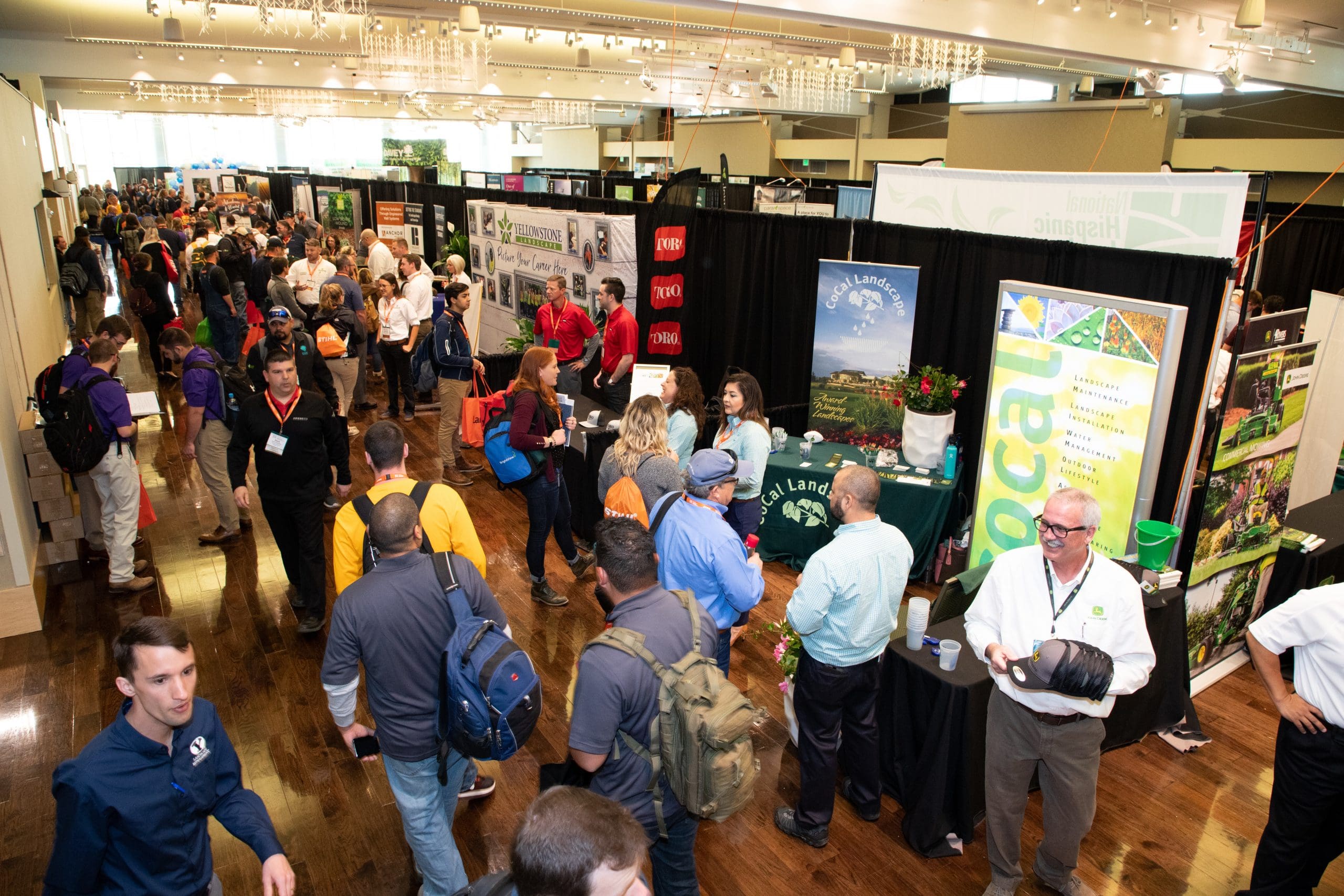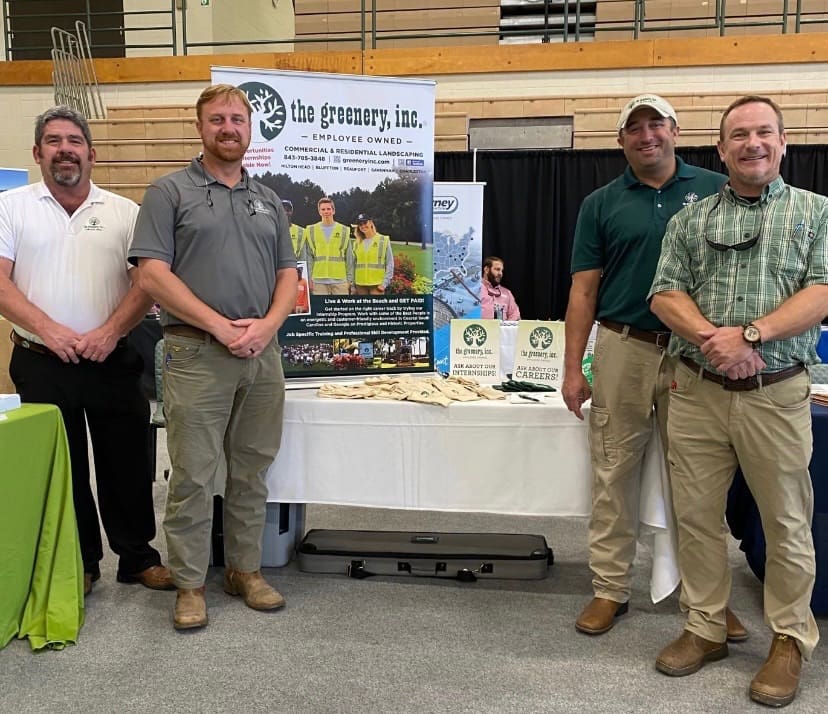
There are numerous career fair opportunities available for your lawn or landscape company to participate in from the high school and college ones to local community or industry events like NCLC.
Deciding to participate in a career fair requires a commitment of time and resources so here’s some of the principles to practice to get the most out of these recruiting situations.
How Many To Attend
One of the main questions you have to decide on is how many career fairs to attend in the average year. Jacob Hong, director of client care for Southview Design, based in St. Paul, Minnesota, says they attend anywhere from two to six career fairs in a year and they have been attending local career fairs for years.
“We often attend to support the associations or the people involved in the fair even more than we are actively recruiting at these career fairs,” Hong says.

Kristina Alonzo, director of human resources for Lambert Landscape Company, based in Dallas, Texas, says they attend two to three events a year, while The Greenery, Inc., based on Hilton Head Island, South Carolina, attends 10 to 12 career fairs a year.
There is no right or wrong number of career fairs to attend, but it’s best not to overextend if you’re just getting started.
There’s also the question of how many staffers need to attend and which team members should go to these events. A good rule of thumb is to have two to four employees represent your company’s booth.
“At national career fairs, two people seem to be enough as many students are looking to work where they grew up and so traffic is not as busy,” Hong says. “It seems like the closer to home, the busier you are doing an event.”
Jerry Ashmore, director of workplace development and safety for The Greenery, says they usually have someone from their workforce development team, an alumnus of the college they are visiting and a newer employee owner attend. Hong agrees it is beneficial to have someone at the event who has a tie to that particular career fair.
“I like to rotate employees as each has a different take on what it’s like to work at Lambert’s; they also have different roles,” Alonzo says.
What to Expect
Depending on the nature of the career fair, you may or may not encounter students who aren’t even aware of the landscape industry and its various career paths. Alonzo and Hong say most of the career fairs they attend are geared toward landscape programs, so students are familiar with the industry.
“We are predominately a high-end residential landscape company, students are typically interested in what differentiates a high-end residential landscape to a residential landscape,” Alonzo says.
Student questions can vary depending on where they are in school, but generic inquiries you can expect include where are you located, what do you do, and what are your salary and benefits.

“As students become more experienced in the industry they begin to ask about processes and procedure within your company,” Hong says. “It is cool to see the evolution and no question is wrong to ask.”
Ashmore says students interested in the industry are often excited by the ability to serve others and seek opportunities to serve the greater good of the community.
Hong says the key to effectively connecting and communicating with students is by being authentic and real. This includes sharing some of the struggles your company is dealing with.
“If I am always telling students about how great is to work (there), then one of two things happens,” Hong says. “Either they do not believe me or I am setting them up with unrealistic expectations when they join our organization.”
Ashmore says as they engage with students, they collect their names and emails to stay in touch and contact them weeks after the career fair to share brochures and more information about The Greenery.
“After the career fairs, I like to give it a week before reaching out to them,” Alonzo says. “I will usually email them and thank them for stopping at our booth. Email tends to work best for us, we recently started using our Instagram to create more of a following and think that we will potentially use that platform a bit more this year when it comes to recruiting.”
Attracting Students to Your Booth
To have these genuine connections, you have to be strategic about attracting attendees to your booth. There are several different methods you can use with varying levels of efficacy. Creating eye-catching marketing material is one good practice. Alonzo says they often get questions about a specific photograph as it’s an attention-getter and conversation starter.
Hong says what really matters is staying true to your core values, as this will attract the people who are a good fit for your organization. Ashmore says simply being friendly and initiating conversations with students as they walk by is effective. He says students are often sent to their booth by teachers or former interns who tell them The Greenery is a great place to work.

One aspect to consider is the age range of your audience at each career fair.
Alonzo says this plays a factor in which employees they decide to bring and what freebies and/or handouts would attract certain demographics. Swag can be anything from pens, notepads and jump drives to gloves, koozies, hats and YETI cups.
“We do have some giveaways that we have at our booths, but they are not meant to draw people in,” Hong says. “They are more a token of thanks for stopping by and having a conversation with us.”
Hong says one year, their display got delayed in shipping and they did not have any swag for the event. He didn’t want to show up empty-handed, so they grabbed stuff at the store to make root beer floats.
“The students loved it, so much so that the next year all the students and professors were asking us the night before if we were going to have root beer floats the next day,” Hong says. “So, if you are going to do something, take some time to think about it and do something different.”
He adds that students are more likely to stop by their booth if they are familiar with the company.
“If students are not familiar with you, they might stop at your booth for swag, but it is nothing more than a transaction for something they will probably never use again,” Hong says. “Spend time before the event finding out who is attending. Reach out to those people and tell them you are excited to see them. Those people will find you, and those are the relationships that you want to build.”
Another common attraction method you’ve probably seen at career fairs is booths hosting mini-games, but Hong says these are often more work with little gain.
“My goal at a career fair is to help the student be successful in their life,” Hong says. “That is what I want to spend my time on, not watching them see how many baskets they are going to make or how many putts they can sink; I want them to be successful in life, so if I can get them to work with us or ask them where they want to be and I can connect them with the right company that is what I want to spend my time on.”

